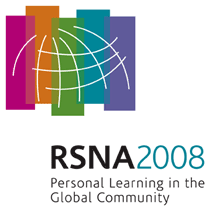
Abstract Archives of the RSNA, 2008
SST07-09
Volume Rendering with Attenuation-dependent Discriminative Color Coding of Tagged Stool During Endoluminal Fly-through of CT Colonography: Effect on Reading Efficiency
Scientific Papers
Presented on December 5, 2008
Presented as part of SST07: Gastrointestinal (CT of Colon: Miscellaneous)
Seong Ho Park MD, Presenter: Nothing to Disclose
Seung Soo Lee MD, Abstract Co-Author: Nothing to Disclose
Jin Kook Kim PhD, Abstract Co-Author: Employee, Mevisys Co, Ltd
Min-Ju Kim MD, Abstract Co-Author: Nothing to Disclose
Hye Jin Kim MD, Abstract Co-Author: Nothing to Disclose
So Yeon Kim MD, Abstract Co-Author: Nothing to Disclose
Min Yeong Kim MD, Abstract Co-Author: Nothing to Disclose
Ah Young Kim MD, Abstract Co-Author: Nothing to Disclose
Hyun Kwon Ha MD, Abstract Co-Author: Nothing to Disclose
et al, Abstract Co-Author: Nothing to Disclose
We developed a new modified volume rendering technique for selective attenuation-dependent discriminative color-coding of tagged stool during endoluminal fly-through of CT colonography (CTC) without any alteration of the other three-dimensional (3D) endoluminal features. This study was conducted to determine the technique's effect on efficiency of primary 3D interpretation of CTC performed with reduced cathartic preparation.
Fourteen men and 16 women (mean age±SD, 58.3 years±10.9 for men and 63.1 years±12.8 for women) were prepared with three doses of 200 ml of 5% w/v barium sulfate for fecal tagging and 20 mg of bisacodyl for moderate bowel cleansing. CT scan was performed by using a 16-MDCT with 1-mm reconstruction thickness. Images were interpreted prospectively by two independent expert readers by using primary endoluminal fly-through both with and without the discriminative color-coding technique. Subsequent optical colonoscopy was performed and served as the reference standard. A total of 25 colonic lesions ≥6 mm were found in 15 patients on optical colonoscopy. Reader preference, interpretation time, and diagnostic performance were evaluated and compared between the two review methods.
Both readers preferred interpretation using the color-coding technique because of the significant reduction in the use of 2D correlations during primary 3D review using this technique, i.e. 9±6.6 (mean±SD) with the color-coding technique vs. 52.9±45.7 without the color-coding technique for reader 1 (P<.001) and 14.5±7.9 vs. 57.1±37.8, respectively, for reader 2 (P<.001). Interpretation time was significantly shortened by using the color-coding technique, i.e. by 3 minutes (P=.002) and 2.5 minutes (P=.009) for each reader, respectively, while the sensitivity for ≥6 mm lesions remained constant at 96% (24/25; 95% CI, 78.9% to <100%) for both readers (P=1).
Selective discriminative color-coding of tagged stool during endoluminal fly-through using the modified volume rendering technique facilitates primary 3D interpretation of CTC performed with reduced cathartic preparation.
Primary 3D interpretation of CTC that is performed with reduced cathartic preparation can be accomplished more easily and time-efficiently by using the modified volume rendering technique.
Park, S,
Lee, S,
Kim, J,
Kim, M,
Kim, H,
Kim, S,
Kim, M,
Kim, A,
Ha, H,
et al, ,
Volume Rendering with Attenuation-dependent Discriminative Color Coding of Tagged Stool During Endoluminal Fly-through of CT Colonography: Effect on Reading Efficiency. Radiological Society of North America 2008 Scientific Assembly and Annual Meeting, February 18 - February 20, 2008 ,Chicago IL.
http://archive.rsna.org/2008/6008234.html

